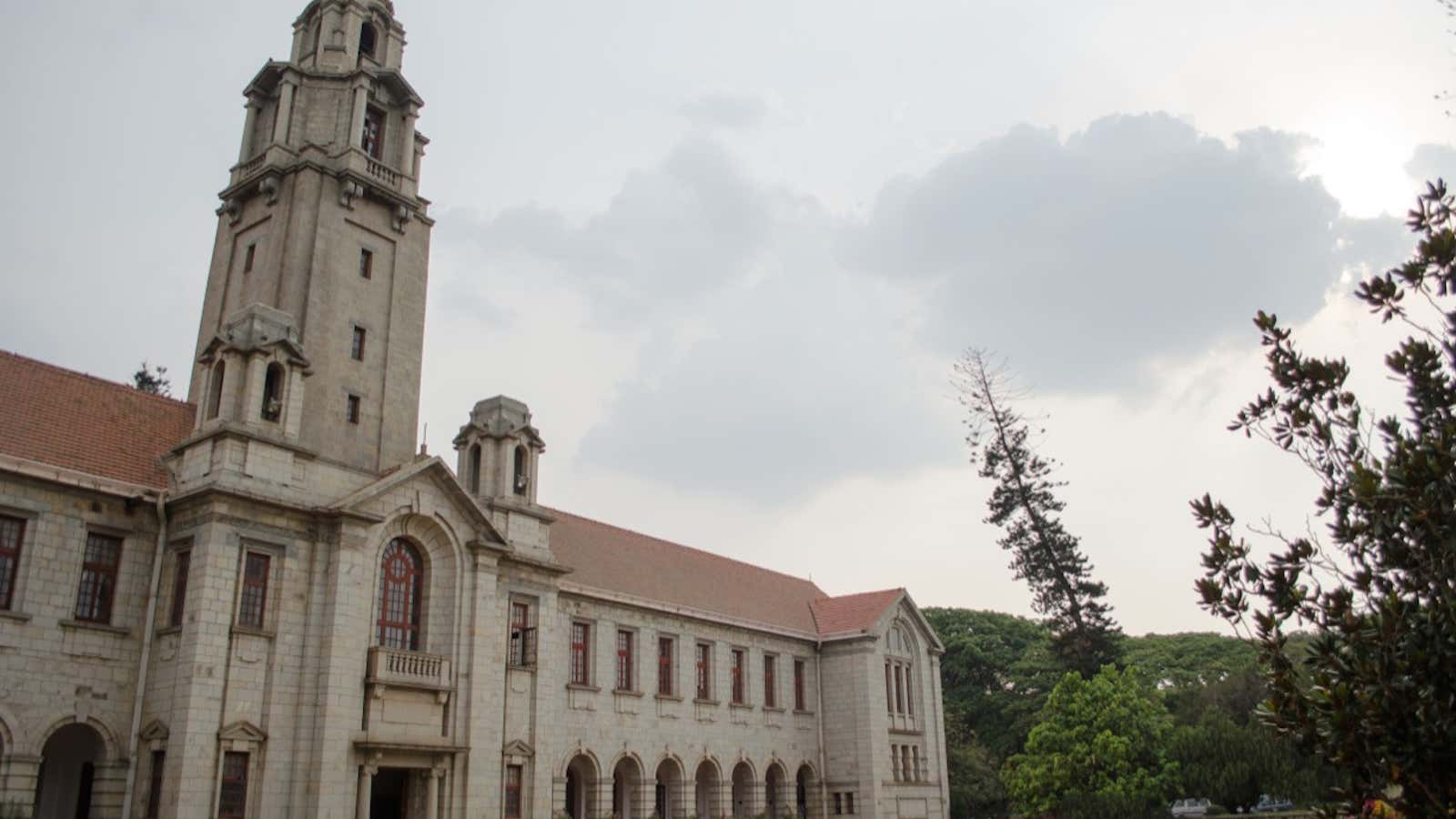The Indian Institute of Science (IISc) in Bengaluru has produced some of the finest scientists in the country.
Yet, the 106-year-old institute had never been ranked among the world’s best universities by Quacquarelli Symonds (QS), one of the top academic ranking agencies globally. Until 2015, that is.
When the London-based firm released its rankings, IISc finally made its debut with a 147th rank. That made it India’s best university, and a notch above all the Indian Institutes of Technology (IITs). IIT Delhi is ranked 179.
No other Indian college has made it to the top 200.
“Nothing has really changed overnight for us,” Anurag Kumar, director of IISc, told Quartz over phone. “As far as the rankings go, there were two factors that worked in our favour. Now we want to be among the top 50 in three years.”
Two big factors
IISc was founded in 1911 by Jamsetji Nusserwanji Tata—the founder of the Tata Group—with help from the government of India, and the Maharaja of Mysore. Till 2011, it offered only post graduate courses, and hence was not eligible for QS rankings.
In 2011, the institute introduced a bachelor’s programme in science. The first batch of 27 students graduated in July this year.
“That made us eligible for the QS rankings this year,” said Kumar.
Once the eligibility norms were met, the institute hired a team familiar with the QS methodology.
“We made sure we had the right team and supplied the information properly. The QS rankings lay a great deal of stress on academic reputation,” Kumar said.
The QS rankings evaluates institutes on six variables: Academic reputation, employer reputation, student to faculty ratio, citations per faculty, international faculty ratio and international students ratio.
In July 2015, in a study conducted by QS, IISc was ranked fifth among 404 universities in the BRICS region.
Lazy institutes
But IISc’s determination to apply for these rankings is in sharp contrast to many of India’s other reputed institutes.
Some of them, including the IITs, often fail to provide accurate information to the ranking agencies on time. The lack of data often forces these agencies to depend on secondary sources, which impacts the college’s final rank. Even Indian president Pranab Mukherjee commented on this complacent attitude of universities.
“Our institutions are sometimes complacent and presume that the world is aware of what they are doing,” Mukherjee said in July. ”If they come out of this mindset, they can achieve wonders. It is important to let the world know what their achievements are.”
But his comments did not have much of an impact.
“The rankings usually ask universities to provide them publicly available information. But most of the times, these universities are lazy to wake up from their slumber and proactively embrace the benchmarks,” Karthick Sridhar, vice-chairman of the Indian Centre for Academic Rankings & Excellence, told Quartz.
Both IISc and IIT Delhi had hired Sridhar to help them with the QS procedure.
“It is not magic that these universities get listed. It’s more about a disciplined data collation approach and polishing them before sending them to ranking firms,” Sridhar said. “Institutes such as IIT Kharagpur and IIT Kanpur are great, but they don’t take active interest.”
